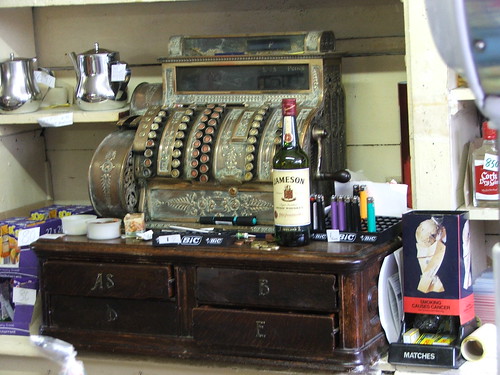Our children are spoilt. There is no getting away from it. It doesn't matter how many times we try and remind them how lucky they are, they are still spoilt.
I worry about the value, or lack of value, they place on things.
I also worry about how it's possible to teach them the value of money and the relative size of different numbers, when actual physical real money hardly exists any more.
Virtual money vs actual money
My daughters have a shop set up in the playroom. (It's huge, and I blame my mother.) They also have a till. On numerous occasions we have started playing shops only to get to the payment point when, after happily asking me to enter my plastic play credit card into the machine, and happily asking me to put my code in, they confusingly try and give me, the customer, some cash. I think they get confused having witnessed the phenomena that is "cash back".
So how do you explain that usually it's up to the customer to pay the shop? And even more confusingly, how do you explain that the card machine actually mysteriously transfers mummy's money to the shop?
The bank of piggy banks
I have tried to explain that mummy and daddy save their money and give it to the bank to look after. I describe it in such a way that they imagine a big room in the bank fully of everyones own piggy bank.
Then, when we use our card in the machine at the shop, the card machine sends a message to the bank to tell them to move the money from our piggy bank to the shops piggy bank at the bank.
I can imagine a scuttling bank employee running between enormous piggy banks with money bags, climbing up ladders and dropping it in the correct shop's slot!

What about coins?
We use play coins when we play shops. And having these are by far the best way to demonstrate the value of something.
I try and start by paying for everything in pence, in much the same way I learnt in the 1970s. Once the children can see how much bigger 10p is to 1p, we start to talk about sticking the coins together to make one 10p coin so it's easier to carry.
A great experiment that the kids love (there's chocolate involved)
The best way to demonstrate how one 10p can represent the same as ten 1ps, is as follows:
- Take 10 chocolate buttons (pretend 1ps) and place them in a saucepan.
- Slowly melt the chocolate on a gentle heat.
- Meanwhile line one round mould of a Yorkshire pudding tray, or a muffin tray, with baking parchment.
- Pour the melted chocolate into the one mould.
- Allow the chocolate to solidify in the mould, either at room temperature, or in the fridge.
- Push out the large chocolate button you have just created out of 10 smaller ones.
This is a nice way of enabling children to understand how a coin can actually represent more than just 1p. Obviously it only helps with the concept of one thing representing another. If anyone actually complains that it doesn't exactly work quite like that, and that a £1 should therefore be enormous, I will actually hold my head in my hands. You, dear readers, are all intelligent, sophisticated, discerning readers, and will, I am in no doubt, understand what concept I am trying to represent in this bit of fun.
So, have you got any other tricks that help to teach young children about money in this online world?












What a great post and I'd never really considered how cards could make it confusing, but I have noticed my 7yo daughter has very little concept of money, despite being intelligent and mature. The boys have always been good with money, but I think that is definitely more of a 'boy thing'.
ReplyDeleteThank you. Yes, the cards thing is definitely an issue for ours. I don't know how boys and girls differ on this only having girls myself. Interesting that your boys get it.
DeleteGreat post. Mushroom sort of understands the concept of money as at about 20 months, he started to just take things of the shelf at our corner shop while waiting for me to pay. So now I give him an item of shopping to pay for, and the money to pay for it. So he understands that things aren't free. He also understands that Mummy and Daddy get money by going to work. However, when I tell him he can't have something because I don't have money on me, he points to the cashpoint where he seems to think there is a neverending supply! I guess that's the next challenge...
ReplyDeleteAh yes. That magic hole in the wall. :-) Good luck!
DeleteMy son is 11 and we've set up a bank account for him with £10 per week which is his pocket money for good behaviour and household chores. He must buy everything except school items from this, so toiletries, clothes, sweets, trips to cinema with his friends etc. This is working really well.
ReplyDeleteSounds brilliant. Do you find yourself still buying him treats though? Or are you really strict? I'd struggle to say our girls couldn't have something if they had saved up but were only £2 short for example. I'd end up giving them the extra funds. How do you manage this?
DeleteYoung or old, people rarely reach goals they haven't set. Nearly every toy or other item children ask their parents to buy them can become the object of a goal-setting session. Such goal-setting helps children learn to become responsible for themselves.
ReplyDelete